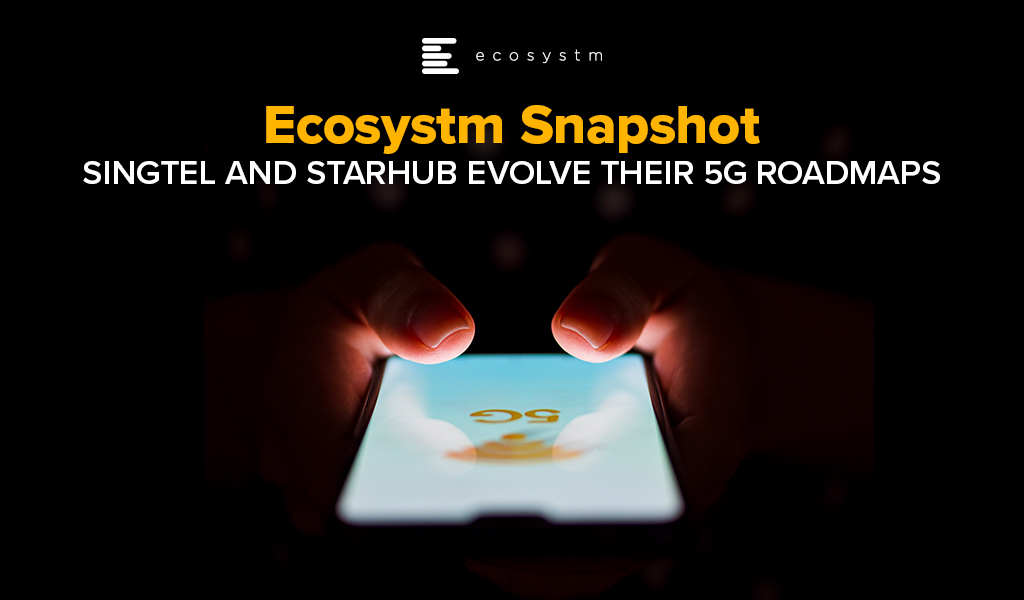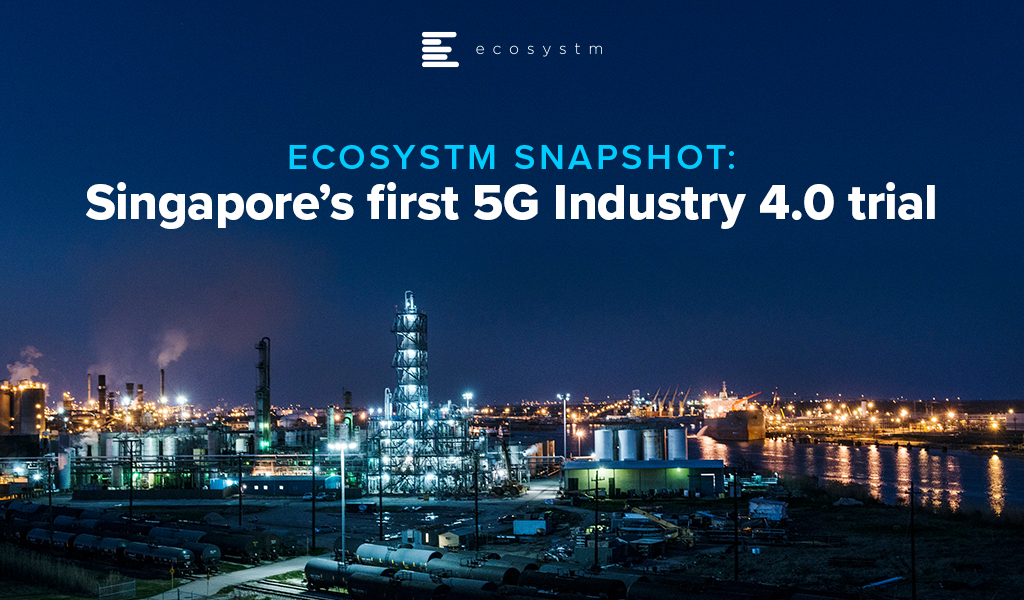In June, the Infocomm Media Development Authority (IMDA) awarded 5G licenses to Singtel and JVCo (formed by Starhub and M1), after they completed the required regulatory processes – including the selection of their preferred frequency spectrums, vendor partners and other technical matters such as performance, coverage, resilience, and cybersecurity. They will be required to provide coverage for at least half of Singapore by end-2022, scaling up to nationwide coverage by end 2025. While Singtel and JVCo were allocated radio frequency spectrum to deploy nationwide 5G networks, other mobile operators, including MVNOs, can access these network services through a wholesale arrangement. The networks will also be supplemented by TPG who has been allocated the remaining mmWave spectrum and will be allowed to roll out localised 5G networks.
Ecosystm Principal Advisor, Shamir Amanullah says, “Singapore, along with Thailand, leads 5G adoption in Southeast Asia and major telecom operators Singtel and StarHub launched trials which gives customers an opportunity to experience 5G speeds and potential new services.”
Singtel’s Journey Forward
Earlier this month Singtel launched its 5G NSA infrastructure on a 3-month trial promising speeds of 1Gbps by use of 3.5GHz frequency coupled with the existing 2100 MHz spectrum. It has made it free for the first 20,000 customers with 5G-compatible smartphones. While the 5G signals initially cover certain central and southern parts of Singapore, the coverage is expected to increase over the trial period. Singtel is also working on the development of other 5G services and integrating its network with technologies such as AI, IoT, Cloud, AR and data technologies, in line with the Government’s vision for 5G.
Last week, Singtel unveiled a 24×7 unmanned 5G powered stall to transform and reshape the retail experience. Labelled as 5G NOW @ UNBOXED, the hyper-connected store is designed to provide a first-hand experience of 5G services and possibilities to retailers and consumers. The store aims to offer seamless service experience to visitors looking for services such as SIM card replacements, and device collection through self-service kiosks. To create a more personalised experience for visitors, a 5G virtual assistant Stella is deployed at the store, integrated with facial recognition and emotion reading capabilities which will work in tandem with UNBOXED’s 5G rover Stanley. The rover is connected with the kiosk’s security system and will manage the contactless experience for visitors through temperature checks and maintaining social distancing measures. The 5G service with wireless connectivity and high speeds makes the store movable in a sort of hybrid online and offline retail model.
Amanullah says, “Singtel has ramped up its digitalisation efforts and increased adoption of digital channels and services to improve their customer experience. The 5G NOW @ UNBOXED phygital experience is cutting edge and brings the physical and digital experience in a seamless fashion for its customers. Singtel will be able to integrate physical and digital marketing efforts which should increase sales opportunity. In a recent report, Singtel announced that more than 70% of customer service transactions are online while only 30% of sales are transacted online. The unmanned 5G powered phygital experience should see online sales rising.”
The 5G powered pop-up store follows the launch of Singtel’s 5G non-standalone (NSA) network in the 3.5 GHz frequency as well as existing 2.1 GHz spectrum integrating technologies such as dual connectivity. The trial based 5G network offers Singtel customers a sense of 5G services such as high-speed internet of more than 1Gbps, video streaming, cloud gaming, AR/VR and other consumer use-cases.
JVCo’s 5G Initiatives
JVCo has also launched its 5G connectivity services using the NSA 5G architecture in the country in partnership with Nokia. StarHub launched its trials in August 2020 which will end on 16 February 2021. The trial runs on an NSA 5G infrastructure on the 2100 MHz spectrum with the SA 5G infrastructure operating on the 3.5 GHz expected to be ready in mid-2021. The StarHub Mobile+ or Biz+ mobile plans, allows customers to automatically experience some early 5G benefits using compatible mobile devices. The 6-month, free trial is a lead up to the full commercial launch of 5G standalone services next year. The telecom operator has a planned investment of USD 146.4 million in 5G infrastructure over a five-year period.
Meanwhile, M1 is working closely with IMDA and is expected to roll out 5G trial services, soon.
Amanullah says, “In the challenging financial times due to the COVID-19 pandemic which has impacted roaming, prepaid segment, equipment sales among others, it is impressive that the leading operators in Singapore are bringing cutting-edge connectivity services which should drive digitalisation of consumers and enterprises.”

Manufacturing is estimated to account for a fifth of Singapore’s GDP and is one of its growth pillars. Singapore has been talking about re-inventing the Manufacturing industry since 2017, when the Industry 4.0 initiatives to enable digitalisation and process automation of processes and to ensure global competitiveness were first launched. As part of the long-term strategy, the Government had spoken about investment into research and development (R&D) projects, developing transformation roadmaps and strengthening the skill sets of the workforce.
Singapore’s 5G Rollout
Last month, the Infocomm Media Development Authority (IMDA) announced that Singtel and JVCo (formed by Starhub and M1) has won the 5G Call for Proposal. They will be required to provide coverage for at least half of Singapore by end-2022, scaling up to nationwide coverage by end 2025. While Singtel and JVCo will be allocated radio frequency spectrum to deploy nationwide 5G networks, other mobile operators, including MVNOs, can access these network services through a wholesale arrangement. The networks will also be supplemented by localised mmWave deployments that will provide high capacity 5G hotspots.
In October 2019, IMDA and the National Research Foundation had set aside $40 million to support 5G trials in strategic sectors such as maritime, aviation, smart estates, consumer applications, Industry 4.0 and government applications. Ecosystm Principal Advisor, Jannat Maqbool says, “Reach, performance and robustness of connectivity and devices have long held back the ability to scale with the IoT as well as successful deployment of some solutions altogether. The integration of 5G with IoT has the potential to change that immensely. However, and possibly even more importantly, 5G will see the emergence of a true ‘Internet’, defined as ‘interconnected networks using standardised communication protocols’, made up of ‘things’ enabling never-before contemplated innovation – supporting economic development and community well-being.”
“While 5G offers enormous potential to produce economic and social benefits, to reach that potential we need to evaluate from a strategic perspective what it could mean for industries, employers and communities – then we need to invest in the infrastructure, innovation and associated development required to leverage the technology.”
Singapore’s Industry 4.0 Transformation
The Government is also focused on getting the industry ready for the transformation that 5G will bring. Last week, Singapore announced its first Industry 4.0 trial, where IMDA collaborates with IBM, M1 and Samsung to design, develop, test and benchmark 5G-enabled Industry 4.0 solutions that can be applied across various industries. The trials will begin at IBM’s facility in Singapore and involve open source infrastructure solutions from Red Hat to test Industry 4.0 use cases.
The project will test 5G-enabled use cases for Manufacturing, focusing on areas such as automated visual inspection using image recognition and video analytics, equipment monitoring and predictive maintenance, and the use of AR in increasing productivity and quality. The focus is also on leveraging 5G to reduce the cost of processing, by shifting the load from the edge device to centralised systems.
Ecosystm Principal Advisor, Kaushik Ghatak says, “For some time now, the Singapore Manufacturing industry has been in the quest for higher productivity in order to regain its foothold as a destination of choice for global manufacturing outsourcing. The 5G Industry 4.0 trial is a great initiative to fast-track identification and adoption of the right use cases in Manufacturing, in the areas of automation, visibility, analytics, as well as for opening new revenue streams through servitisation of smart products.”
5G will see increased collaboration in the Tech industry
With the advent of 5G, the market will see more collaboration between government agencies, telecom providers and cloud platform providers and network equipment providers. Governments globally have invested in 5G and so have the network and communications equipment providers. However, telecom providers are unsure of how to monetise 5G and cater to the shift in their customer profile from consumers to enterprises. IBM and Samsung had already announced the launch of a joint platform in late 2019. Collaborations such as these will be key to widespread 5G deployment and uptake.
Talking about the benefits of collaborative efforts such as this, Maqbool says, “Robustness and security built into 5G deployment from the outset is essential to enable the applications and innovation that many are promising the technology will deliver, including the ability to self-scale, automate fault management and support edge processing.”
It is interesting that the solutions developed will be featured at IBM’s Industry 4.0 Studio 5G Solutions Showcase, and that IBM and Samsung will evaluate successful solutions developed during the project for possible use in their operations in a broad range of markets and sectors. “Availability of proven use cases at IBM’s Solutions Showcase centre would benefit local manufactures greatly; in terms of easy access to right skills and proven technology architectures,” says Ghatak. “This initiative is a huge step towards realising the promise of the cyber physical world. The collaboration between the leaders in communications, equipment and software will ensure that the use case development is truly cutting edge.”




